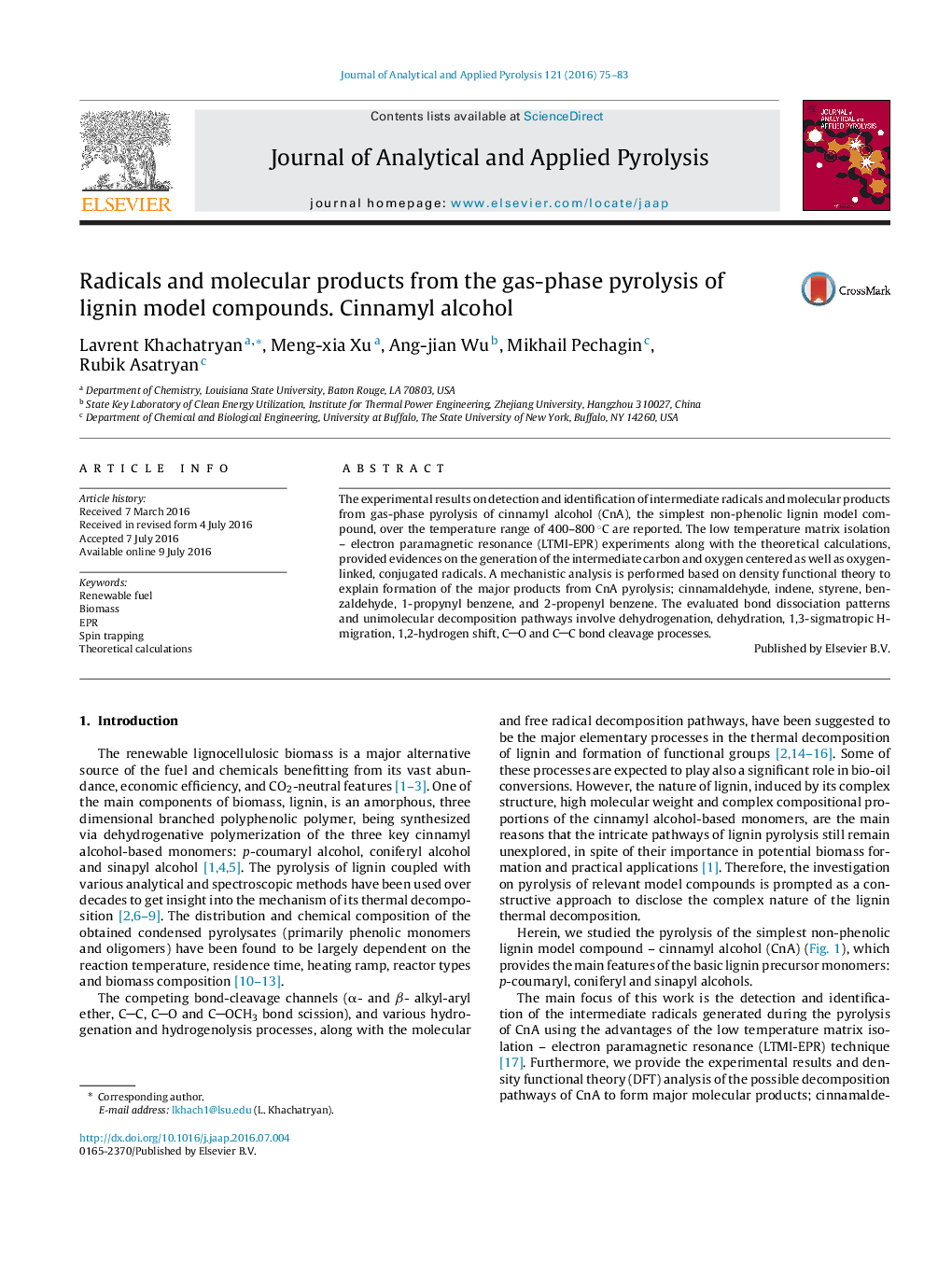| Article ID | Journal | Published Year | Pages | File Type |
|---|---|---|---|---|
| 5134709 | Journal of Analytical and Applied Pyrolysis | 2016 | 9 Pages |
•A radical-molecular mechanism for primary products formation from pyrolysis of cinnamyl aldehyde (CnA) is reported.•The formation of oxygen-centered radicals was identified using the low-temperature matrix isolation EPR spectroscopy and spin-trapping technique.•DFT-analysis supported the possible transformation pathways of CnA during pyrolysis.
The experimental results on detection and identification of intermediate radicals and molecular products from gas-phase pyrolysis of cinnamyl alcohol (CnA), the simplest non-phenolic lignin model compound, over the temperature range of 400–800 °C are reported. The low temperature matrix isolation – electron paramagnetic resonance (LTMI-EPR) experiments along with the theoretical calculations, provided evidences on the generation of the intermediate carbon and oxygen centered as well as oxygen-linked, conjugated radicals. A mechanistic analysis is performed based on density functional theory to explain formation of the major products from CnA pyrolysis; cinnamaldehyde, indene, styrene, benzaldehyde, 1-propynyl benzene, and 2-propenyl benzene. The evaluated bond dissociation patterns and unimolecular decomposition pathways involve dehydrogenation, dehydration, 1,3-sigmatropic H-migration, 1,2-hydrogen shift, CO and CC bond cleavage processes.
